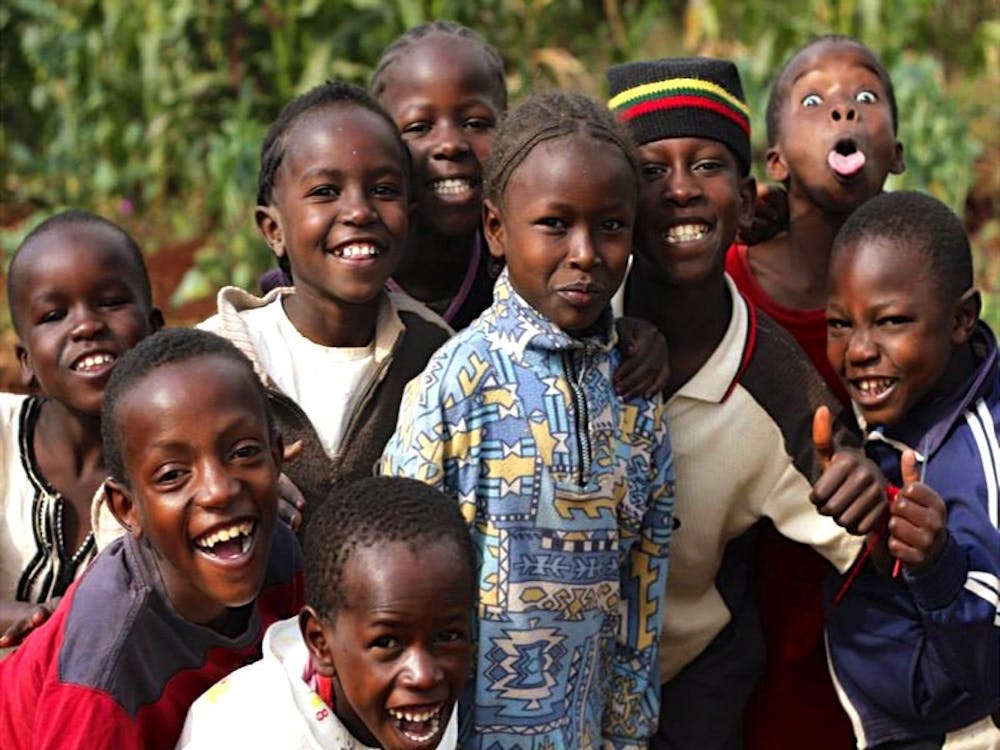Christine Fortner — Kenya
During my time in Kenya, I spent nine weeks teaching in a local school, working in an orphanage and living with a host family. I taught English and math at a primary school in Kitengela, Kenya, my first four weeks at a well respected public school with 800 students. The students ranged from first grade through eighth, with each class containing 80 to 100 students with an average four students per desk.
Most days the teachers spent their time in the teachers’ lounge absent from class, leaving the children to teach themselves. Yet they still held the students to very high standards, caning them for having a rip in their uniforms, disheveled hair or for talking out of turn. Four weeks into my trip, every public school teacher in Kenya went on strike, demanding more money. Children were not allowed on school property or to wear their uniforms until the government met the demands of the teachers. The strike dragged on for four full weeks, keeping the children out of school and hurting their chances to pass their exams.
Not knowing when the strike would end, I decided to move a few hours away and work in an orphanage. Living in Wangige, Kenya, there were two orphanages close by, both of which were started by my host parents, Duncan and Lucy Njoki Ndegwa. Their first orphanage, the Gathiga Hope Home, houses more than 100 children aged three to 20 years old who previously lived on the streets. The orphanage serves three meals a day and gives them the opportunity to attend school.
Lucy explained that the goals for the orphanage were simple.
“It is the little things that count,” Lucy said. “Not being hungry or sick anymore or being able to go to school. Health, nutrition and education are our main goals. Keeping faith in one another and the hope for a better future are our motivation.”
Once a week, Duncan would bring a few volunteers, including myself, to the streets of Nairobi to hand out bread, bananas and tea to the homeless population. Traveling to Nairobi for the first time, I found children sleeping on sidewalks in the freezing cold. We even saw children as young as six years old getting high and suppressing their hunger by sniffing glue.
I left Kenya with a bigger heart and a satisfied soul. I saw the struggles and pain a different culture goes through and the devastating circumstances children on the street face. But despite those hardships, I saw people rise up and find hope, showing joy and love like nothing I had seen before.
Rachel Kagan — Dublin, Ireland
Dubliners are rightly proud of their city, culture and history. This pride can be seen in the beautifully maintained buildings in Dublin’s center and the statues of historical figures on just about every street. In my opinion, one of the most beautiful buildings in the city is the General Post Office, commonly known as the GPO.
Located in the heart of Dublin, the GPO is one of the oldest buildings in the city. The building opened in 1818 and retains its original facade, complete with bullet holes that offer a harsh reminder of the violence that took place in the streets of Dublin during the 1916 Easter Rebellion, when Irish nationalists fought against the British army.
In contrast to the stately, classical architecture found throughout the city center, Dublin is a very modern city with a large young population, green spaces and a thriving nightlife. One could easily visit the centuries-old Dublin Castle or the Kilmainham jail in the morning and cap their day off with one of the many clubs that night.
Allyssa Rabinowitz — Honduras
This summer, I spent four weeks with 53 other interns from all over the United States working with an international development organization called Global Brigades. We worked on sustainable development projects across rural Honduras.
The first three weeks of my internship were spent on four different brigades involving education and implementation. We dug trenches and evaluated the water system of communities, proposed and built school gardens in two different communities, continued an architecture project building a health center in another community and built stoves, cement floors and a sanitation station for four families.
Together, these projects centered around Global Brigades’ sustainable holistic model that aims to meet the basic needs of rural families in terms of water, microfinance, health and development. The final week of my internship was spent writing and presenting a project proposal we designed that focused on female empowerment in Honduran communities.


